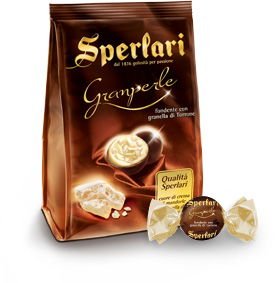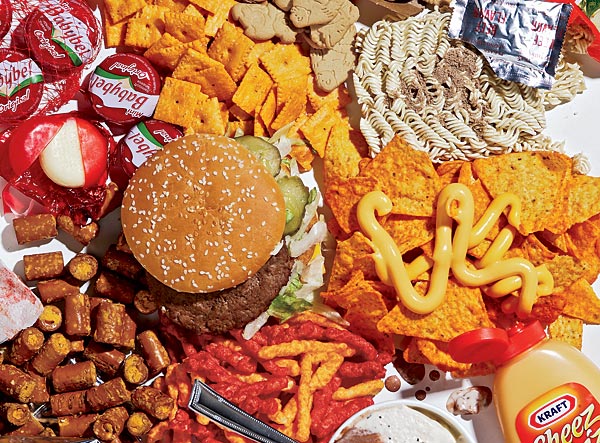Politicians eating burgers does not, historically, inspire confidence.
Watching Midwest governors chow down on hamburgers containing pink slime, er, lean finely textured beef (LFTB yo) from Beef Products Inc. during a press junket last week immediately brought to mind former U.K. Agriculture Secretary John Gummer feeding a hamburger to his four-year-old daughter,  Cordelia, as concerns about the safety of British beef in 1990, the early days of the mad cow disease debacle.
Cordelia, as concerns about the safety of British beef in 1990, the early days of the mad cow disease debacle.
Things didn’t turn out so well.
It’s become routine for politicians to chow down on foodstuffs that been slighted, real or imaginary:
• in 1996, the Japanese prime minister scarfed down radish spouts after an outbreak that killed 11 and sickened almost 10,000 with E. coli;
• Canadian Prime Minister Jean Chretien indulged in a burger after the first case of mad cow disease was discovered in Canada in May 2003;
• French President Jacques Chirac and future French president Nicolas Sarkozy consumed cooked chicken during the International Agriculture show in Paris in March 2006 to bolster confidence after an outbreak of avian influenza;
• Norwegian Prime Minister Jens Stoltenberg said in 2006 he often fed salmon to his own children after Russia banned imports of fresh Norwegian salmon because of worries about toxic metals;
• Pennsylvania Governor Ed Rendell lunched at a Philadelphia Taco Bell in Dec. 2006 after an E. coli O157:H7 outbreak linked to lettuce sickened 71;
• in 2008, Italy’s Agriculture Minister, Paolo De Castro, dug into some buffalo mozzarella for the cameras after assuring the European Commission that no mozzarella cheese contaminated with cancer-causing dioxin had been exported;
• during a 2008 salmonella-in-cantaloupe outbreak, President Manuel Zelaya of Honduras downed some homegrown melon for a CNN news crew, proclaiming, "I eat this fruit without any fear. It’s a delicious fruit. Nothing happens to me!” and,
.jpg) • last year, Spanish politicians rushed to consume cucumbers incorrectly fingered in the E. coli O104 outbreak eventually linked to raw, organic sprouts.
• last year, Spanish politicians rushed to consume cucumbers incorrectly fingered in the E. coli O104 outbreak eventually linked to raw, organic sprouts.
Forget the theatrics. Show me the data. And let me choose.
I’ll choose safe food.
But pink slime isn’t really about safety.
How could such a technologically-savvy company such as Beef Products Inc. – the makers of pink slime – resort to such an ole timey public relations strategy that may have created some converts but overall fueled concern about the technology?
As noted science-and-society type, Dorothy Nelkin, er, noted in 1995, efforts to convince the public about the safety and benefits of new or existing technologies — or in this case the safety of the food supply — rather than enhancing public confidence, may actually amplify anxieties and mistrust by denying the legitimacy of fundamental social concerns. The public expresses a much broader notion of risk, one concerned with, among other characteristics, accountability, economics, values and trust.
Nelkin’s Selling Science: How the Press Covers Science and Technology, while flawed, was instrumental in my approach to these issues, food-related or not.
And now that the slimy dirty work’s been largely done, arm-chair quarterbacks are surfacing with declarations of originality that reek of recycling. In an Internet era, that’s easy. Chapman calls them tracers.
Everyone is probably relieved to know Andrew Revkin of the New York Times is OK with pink slime, even though his family rarely eats beef and he’d love to see the day when all beef comes from free-range herds like the one up the road (move to Australia).
In Taiwan, hundreds of people dressed in black protested yesterday in front of Liberty Square at the Chiang Kai-shek Memorial Hall in Taipei against a proposed policy to lift the ban on meat that contains lean-meat additives.
Holding electric candles, the crowd of about 600 participants set out on a silent march toward Ketagalan Boulevard at sunset, which organizers said symbolized the coming of a dark food-safety era in Taiwan.
Wendy’s Co says it never has used pink slime in its hamburgers and ran ads in eight major daily newspapers around the United States on Friday to let diners know that. "We have never used lean finely textured beef (pink slime) because it doesn’t meet our high quality standards," Wendy’s spokesman Bob Bertini told Reuters.
Quality and safety are two different things. I’ll choose safety.
Today’s USA Today has competing opinion pieces about the safety of pink slime but they say nothing that couldn’t have been said three weeks ago, three months ago, three years ago, or three decades ago.
 What will happen when the next mystery ingredient is unveiled, like pulling back the curtain on the Wizard in Oz.
What will happen when the next mystery ingredient is unveiled, like pulling back the curtain on the Wizard in Oz.
Any farm, processor, retailer or restaurant can be held accountable for food production – and increasingly so with smartphones, facebook and new toys down the road. Whether it’s real or just an accusation, consumers will rightly react based on the information available.
Rather than adopt a defensive tone, any food provider should proudly proclaim – brag – about everything they do to enhance food safety. Explanations after the discovery of some mystery ingredient sorta suck.
That’s why microbial food safety should be marketed at retail so consumers actually have a choice and hold producers and processors – conventional, organic or otherwise – to a standard of honesty. Be honest with consumers and disclose what’s in any food; if restaurant inspection results can be displayed on a placard via a QR code read by smartphones when someone goes out for a meal, why not at the grocery store? Or the school lunch? For any food, link to web sites detailing how the food was produced, processed and safely handled, or whatever becomes the next theatrical production – or be held hostage.
What Wendy’s is doing is nothing but exploitation marketing, telling people what isn’t in food instead of what is. (which is what the vast majority of food marketing is).
Maybe the next mystery ingredient to go viral will be something in Wendy’s burgers.
 Provide all information up front (we have experience with this having sold genetically engineered corn at a farm market for 3 years a long, long time ago), get the science right, don’t BS.
Provide all information up front (we have experience with this having sold genetically engineered corn at a farm market for 3 years a long, long time ago), get the science right, don’t BS.
Choice is a fundamental value. What’s the best way to enable choice, for those who don’t want to eat pink slime, or for those who care more about whether a food will make their kids barf?
 been made public – has chosen to boost consumption by educating Canadians on the safety of U.S. greens; with that focus, they’ve already lost.
been made public – has chosen to boost consumption by educating Canadians on the safety of U.S. greens; with that focus, they’ve already lost. same type of activity will be repeated with a different theme. A food safety spokesperson will also be pitched to Canadian television and radio outlets in an additional effort to communicate with consumers about the safety of California leafy greens.
same type of activity will be repeated with a different theme. A food safety spokesperson will also be pitched to Canadian television and radio outlets in an additional effort to communicate with consumers about the safety of California leafy greens. 

 Cordelia, as concerns about the safety of British beef in 1990, the early days of the mad cow disease debacle.
Cordelia, as concerns about the safety of British beef in 1990, the early days of the mad cow disease debacle..jpg) • last year, Spanish politicians rushed to consume cucumbers incorrectly fingered in the E. coli O104 outbreak eventually linked to raw, organic sprouts.
• last year, Spanish politicians rushed to consume cucumbers incorrectly fingered in the E. coli O104 outbreak eventually linked to raw, organic sprouts. What will happen when the next
What will happen when the next  Provide all information up front (we have experience with this having sold genetically engineered corn at a farm market for 3 years a long, long time ago), get the science right, don’t BS.
Provide all information up front (we have experience with this having sold genetically engineered corn at a farm market for 3 years a long, long time ago), get the science right, don’t BS. on much. A recall for foreign bodies is also exceptional as officials don’t mind foreign bodies much. What is typically Italian is the threatening message at the end: we tell the public because we have to, but we will sue you if you talk about it to anyone, or you link to our page.
on much. A recall for foreign bodies is also exceptional as officials don’t mind foreign bodies much. What is typically Italian is the threatening message at the end: we tell the public because we have to, but we will sue you if you talk about it to anyone, or you link to our page. water, and should similarly highlight food ingredients that are responsible for killing vastly more Canadians, says the article.
water, and should similarly highlight food ingredients that are responsible for killing vastly more Canadians, says the article.